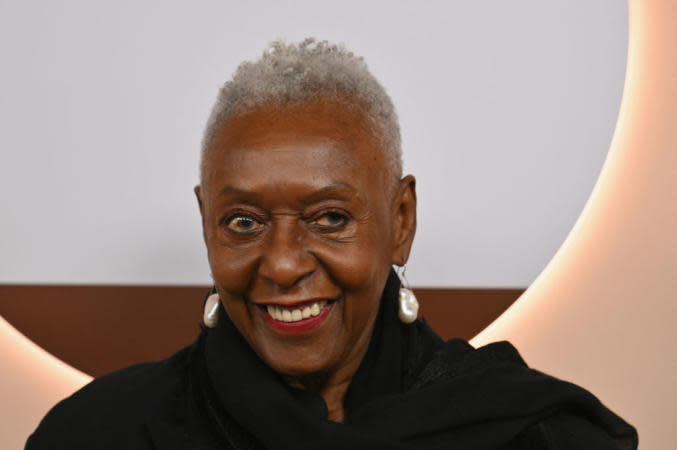Fashion Owes Everything To Bethann Hardison — And ‘Invisible’ Beauty Proves It

- Oops!Something went wrong.Please try again later.
Fashion is an industry that lacks formal accountability. Like most institutions in the U.S. and around the world, it was founded on eurocentric ideals that prioritized whiteness and condemned Blackness. But unlike many of those institutions, fashion has no governing body to make sure its campaigns reflect the world we live in. Thus, Bethann Hardison became the governing body fashion desperately needed, and Invisible Beauty shows viewers that the industry owes her everything.
The documentary, which premiered at the Sundance Film Festival, follows Hardison’s influence on fashion, past, present and future. The 80-year-old has been in the game for over five decades, and she continues to alter the fabric of the industry by paving the way for BIPOC to succeed.
The post Fashion Owes Everything To Bethann Hardison — And ‘Invisible’ Beauty Proves It appeared first on Blavity.
The documentary is jointly directed by Frédéric Tcheng ( Dior and I, Halston) and Hardison herself. The latter is pivotal to what makes Invisible Beauty special— it’s Hardison’s story as told by her on every level, in front of and behind the camera.
Invisible Beauty breezes by Hardison’s childhood and heads straight for her time with the Black and Brown New York City fashion girls of the late ‘60s and ‘70s. What a magical time for fashion and Hardison, who was discovered by Willi Smith in ‘63. Intrigued by her look, he helped catapult Hardison to local stardom, making her a staple face in NYC fashion during the era. Cue a montage of vibrant chiffons and goddess silhouettes.
Ten years after her discovery, Hardison heads to the Palace of Versailles for their iconic Battle of Versailles show. She walks with Stephen Burrows, who becomes a close collaborator and dear friend. He appears in the documentary, along with some of the biggest names in fashion who’ve been touched by Hardison, to sing her praises.
The 1973 Versailles show marked a change in fashion. With a standing ovation following Burrow’s collection, worn by Hardison and other NYC-based BlPOC models, it seemed as though fashion was finally evolving.
Hardison put in work to make sure the industry kept evolving, shifting her work to fashion activism in the early ‘80s. In 1984, she founded the Bethann Management Agency, which championed diversity in fashion, and a few years later, the Black Girls Coalition, which she created with model-turned-mogul Iman to protect and support Black models in the industry. With Hardison at their necks, the industry didn’t have a choice. They had to include BIPOC folks in the conversation.
After years of countless efforts, Hardison took a well-deserved break. She acquired a peaceful hacienda in Mexico and was prepared to say my work here is done. But with her departure came the re-whiteification of the fashion industry, and before she could load her tortilla chip with fresh-made guacamole, Hardison was getting calls to return.
Seeing the regression in the industry, the documentary shows Hardison jump right back into her advocacy work and push fashion bigwigs to include BlPOC talent. And she shifted the industry once again.
But Invisible Beauty doesn’t gloss over Hardison’s flaws, nor what she’s sacrificed to save the fashion industry and many others. Her journey is embedded with a lot of loneliness, and complicated relationships with her loved ones, most notably her son Kadeem. The documentary, which explores who Hardison has in her corner, asks: “Who does the king go to for advice?”
Invisible Beauty will have you rise to your feet on more than one occasion. Seeing Hardison redefine the fashion industry, and what society considers beautiful, is nothing short of inspiring. And seeing Hardison be a flawed person through all of that keeps her story grounded, and real.
The documentary concludes with an important question: when we lose Hardison, who will keep fashion accountable? Some of her closest confidants are worried, but Hardison has faith in Gen Z and other generations to come, and not to mention the lasting effect of her legacy.

